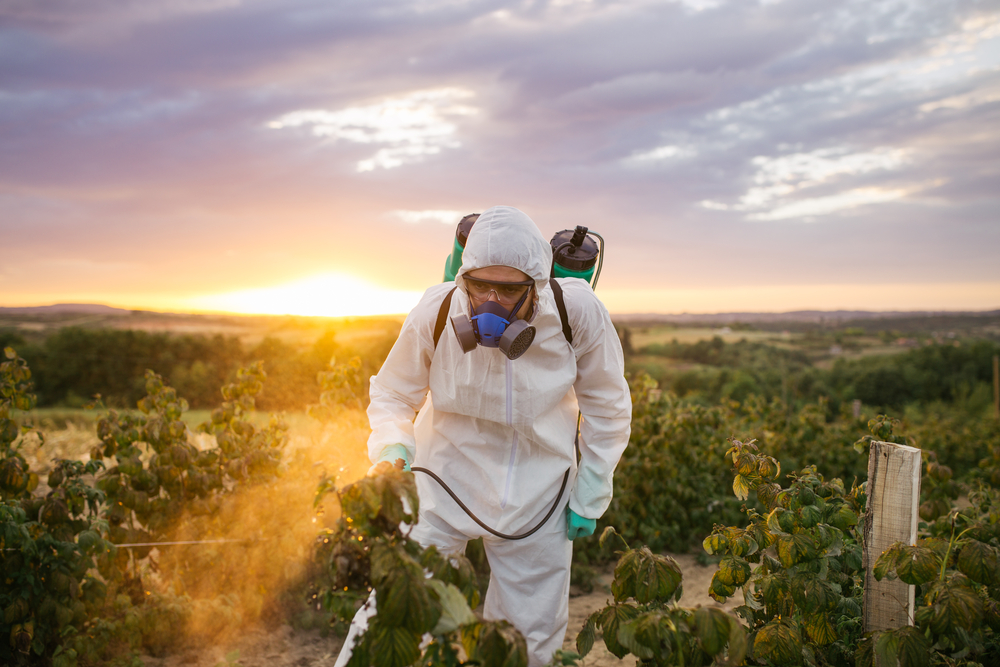How Is Paraquat Poisoning Diagnosed?
Paraquat is a popular herbicide (weed and grass killer) developed in the 1960s that remains legal for commercial farming and agriculture in the U.S. It is estimated that over eight million pounds are used annually. Yet, paraquat, also known as the common brand name Gramoxone, is banned in over 30 countries worldwide due to its extreme toxicity. Inhaling, ingesting or absorbing even small amounts of the poisonous product can lead to severe, lifelong health problems and, in many cases, swift and painful death.
Farmers and other agricultural workers, who must be licensed by the Environmental Protection Agency (EPA) to work with paraquat, are at the highest risk for paraquat poisoning. It is typically a coffee-colored liquid that anyone can accidentally ingest if it has not been properly dyed with a blue color to set it apart.

What happens if you or someone you know is exposed or poisoned by paraquat?
Symptoms of Paraquat Poisoning
Recognizing the signs of paraquat exposure is crucial. As the devastating effects can set in very quickly and there is no antidote. If a person has been around paraquat and begins exhibiting any of the following symptoms, permanent damage or death is highly likely unless you seek immediate emergency care.
- Rapid onset of pain and swelling in mouth and throat, nausea, vomiting, stomach pain and diarrhea
- Signs of kidney, liver or lung failure
- Struggling to breathe or having seizures
- Rapid heart rate
- Confusion or muscle weakness
- Coma
If someone survives paraquat poisoning, they are likely to have some kind of permanent health damage, especially if a larger amount was ingested. This includes possible heart, kidney or liver failure, lung scarring and difficulty or inability to swallow. Some patients who ingest only small amounts may make a full recovery if treated in time.
Diagnosing Paraquat Poisoning
The most common diagnostic method for paraquat exposure is blood and urine testing at the hospital. Urine tests can determine things like dehydration and kidney function, while blood tests can reveal how damaged all organs are.
The samples should be obtained as soon as possible after the initial exposure. For the urinalysis, lab technicians will place about 10 milliliters of urine into a container with two grams of sodium bicarbonate, then shake it together. Then a gram of sodium dithionite is added and then shaken again. After it all settles, the sample will be viewed against a white background. If the sample turns blue or greenish gray, it confirms the presence of paraquat.
Other tests may include a chest x-ray, electrocardiogram (on your heart), or a bronchoscopy/endoscopy, which involves inserting a tube into the mouth and throat to assess damage to the lungs, esophagus and stomach.
Researchers have experimented with other diagnostic methods as well. This year, one new study successfully combined metabolomics (small cell) technology and AI (machine learning) for a more accurate diagnosis.
Treating Paraquat Poisoning
Once paraquat poisoning has been confirmed, the focus becomes removing it from your system as quickly as possible. Activated charcoal can halt absorption, which might be the first step. If it’s been under an hour since the paraquat exposure, your physician might use a tube inserted through the nose and mouth to suction out the paraquat.
If the damage is extensive or if it’s been long since a paraquat exposure, you may receive hemoperfusion, which attempts to filter the blood through charcoal. You will also likely receive intravenous medication and fluids, dialysis for kidney failure, and a ventilator if you’re having trouble breathing. More symptoms may appear over time, and your doctor will treat those as they arise.
A full recovery from paraquat poisoning is rare unless you only ingested a small amount. There will most likely be some level of permanent damage. Your healthcare provider will do everything possible to relieve symptoms and mitigate further complications.
Paraquat Lawsuits
Disturbing evidence of a link between Paraquat exposure and Parkinson’s disease has been building for quite a while. The leading U.S. manufacturer of paraquat, Syngenta, is constantly being hit with more litigation as agricultural workers are developing Parkinson’s after years of working closely with the herbicide. Although the EPA found “insufficient evidence” to link paraquat to Parkinson’s “when used according to the label,” multiple high-profile studies found a strong correlation. One determined that workers who mix or apply paraquat increase their risk of Parkinson’s by an astonishing 200 percent.
Syngenta firmly rejects these claims in their public documentation. Still, pretrial discovery revealed that the company and previous paraquat manufacturers have been fully aware of how deadly the substance is.
More than 150 cases related to paraquat and Parkinson’s were consolidated into multidistrict litigation (MDL) this past June, meaning one court will be responsible for all pretrial proceedings. Each plaintiff is scheduled for their day in court next year, and victims could recover compensation for loss of income, medical expenses and emotional and physical suffering. Hundreds of more suits are pending.
Another group of workers has filed suit against the EPA, who recently reissued its approval for commercial use of paraquat despite its widely-known toxicity.




















